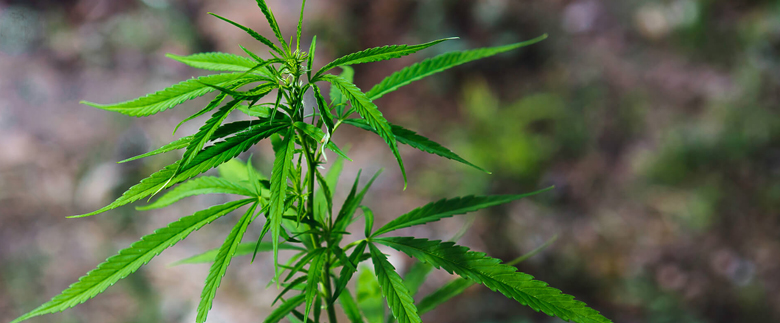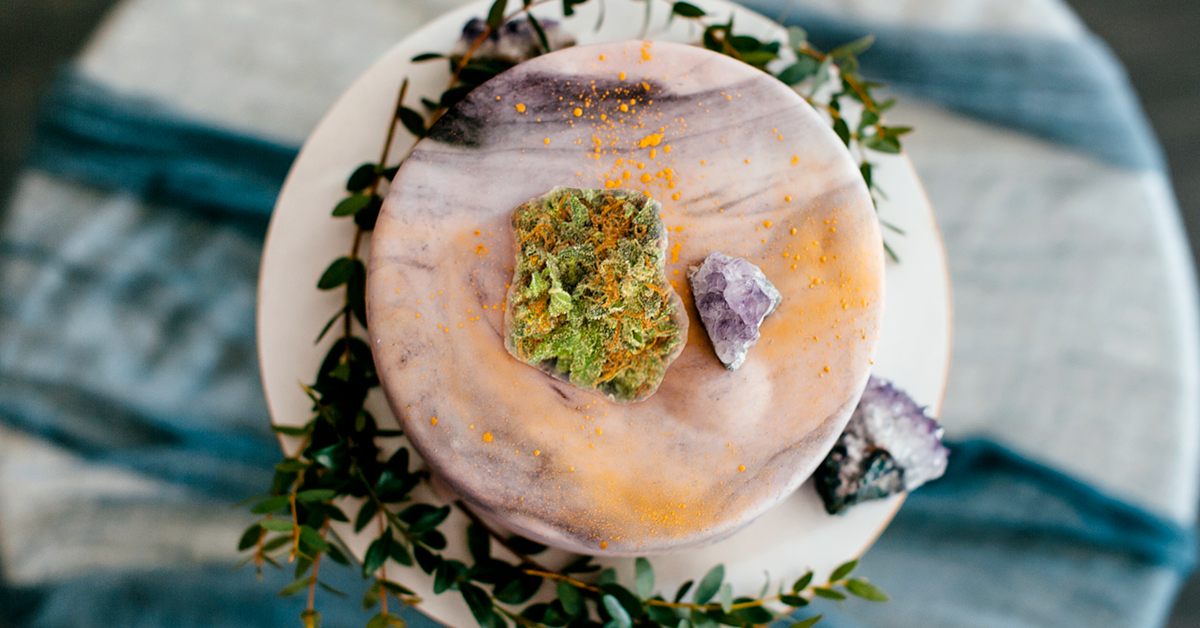When it comes to the cannabis family, most of us are aware of Indica and Sativa with their specific effects and highs. Every green bud is classified into these two categories based on what it does to us when consumed. However, we have a long-forgotten member of the marijuana family that needs to be introduced; Cannabis Ruderalis.
With the expanding horizons of weed, we have accepted much new information in the past few years. But, this little sneaky relative/cousin of the green plant has conveniently slipped through our information portal. Nevertheless, the popularity of the Cannabis Ruderalis among the weed breeders compelled us to bring the third variety of the plant to the forefront. In this article, we will be looking at the origin, characteristics, cannabinoid profile, and effects of C.Ruderalis.
What is Cannabis Ruderalis?

Officially identified by Russian Botanist Janischewski in 1924, Cannabis Ruderalis is known for its supreme adaptability to any climate. It is native to the harsh climate of Russia, Central Asia, and Europe. The weed that grows there is pretty different from what we identify as Hybrid strains today.
The term Ruderalis comes from the Latin word Ruderal that translates to 'rubble' in English. The cannabis plant is named such as it can grow in any weather condition without much human interference. In fact, Cannabis Ruderalis is found on the roadside, lands disturbed by human activity, and in the harshest climate. Pure Ruderalis seeds are so tough, and they continue living even after being stepped on and cracked open. They survive in the frozen ground and sprout when the conditions are desirable for growth.
Cannabis Ruderalis was proclaimed to be the wild breed of cannabis. However, like everything else in the canna world, the enthusiastic population found a way to bring it indoors to make use of it!
Characteristics of Cannabis Ruderalis - How does it differ from other varieties?
The stunning Sativa grows up to 20 feet with a wide leaf structure and resin-dense plant, whereas Indica grows six feet tall. However, Ruderalis is the smallest in the cannabis family measuring only two and a half feet in height. Its short stature comes from its ability to thrive in harsh and varied conditions, poor soil, and even undue exposure to wind and pests.
Also known as dwarf cannabis, it features flat-bladed leaves, quite similar to the ones we see as the symbol of marijuana and cannabis culture.

The leaves of the plant are light green and have a haphazard growth pattern. The buds are considerably smaller than their Indica or Sativa counterparts but are supported by the tough stems that grow in the harsh climate.
The most prominent characteristic of the Cannabis Ruderalis is probably its auto-flowering cycle that widely differs from the Indica or Sativa plant. C.Ruderalis follows a flowering timing that is induced when the plant matures, without any need for a particular light cycle. We will be seeing the auto-flowering characteristics in more detail.
Cannabis Ruderalis Cannabinoid Makeup
Anytime we hear weed, the next thought is its THC and CBD content. I mean, the most natural instinct of any canna-ssuer is to pick up a bud and examine its cannabinoid and potency before consuming it. Let's see what Cannabis Ruderalis has to offer!

Ruderalis, to the disappointment of many fans, has very little THC content. If you're to wonder how little, it is almost comparable to hemp. Yes, that little!
Hemp is the cannabis cousin that is famously used as an industrial raw material and is legal in the UK. To qualify as hemp, the plant must contain less than 0.3% THC. Cannabis Ruderalis steps up a notch and is known to have less than 3% THC. In comparison, an Indica or Sativa plant comprises around 20-28% THC content.
Coming to the other famous cannabinoid known for its medicinal and non-intoxicating properties, CBD, Cannabis Ruderalis is higher in CBD. It contains the benefits of the cannabis plant (in small quantities) without the intoxicating or the high-inducing feature. Moreover, the high CBD content makes it attractive to the breeders looking to produce higher CBD-content strains.
Effects of Cannabis Ruderalis - Will it make me high?
If you're wondering what a full-grown ruderalis bud would make you see, the answer is nothing. If you're a recreational user looking for a psychotic high, the bad news is that c.Ruderalis doesn't have enough THC content to help you reach the high land. On the other hand, its quick-growing property helps breeders induce a swift growth in cannabis strains that might give you the effects you are looking for. The answer to 'will Cannabis Ruderalis make me high?' is, unfortunately, 'No'.
In other news, if you're an absolute noob who has never stepped into the world of intoxication, stimulants, or psychoactive, Ruderalis might mildly affect you in the traditional 'weed' way. The percentage of the population who have successfully avoided any stimulant in this rampant world is pretty low. And if you're a part of it, firstly congratulations, and additionally, starting with Ruderalis might be a good option. Once acquainted with the feel of the THC kicking in, you can move on to hybrid strains and gradually to more potent ones- whatever suits your preference.
Cannabis Ruderalis and Hemp - A Comparison

There are many fundamental differences between Cannabis Ruderalis and Hemp. However, due to the low THC content, they are often put in the same category. Let's take a look at the difference.
Hemp is a relative of the cannabis plant but differs widely when it comes to THC content. Hemp is bred to keep the THC content well within the legal limit. Even if you consume a whole lot of this plant, there would be no effect on your body or mind. As a matter of fact, hemp is usually confined to its industrial uses and food application.
Hemp Seeds are extremely nutritious with a high content of vitamins, potassium, magnesium etc. They are extensively used in soups and salads, and even smoothies. You might find hemp in your everyday necessities like shampoo, plastic, and many industrial items. It's just an all-rounder!
Cannabis Ruderalis, on the other hand, has a higher THC content than the hemp plant. It contains no nutrition, neither proves to be beneficial to be used as an industrial product. The advantage of Cannabis Ruderalis stems from its ability to withstand harsh conditions and commendable growing properties.
| Also Read: Cannabis Landrace Strains - Origin and Complete Strain List |
Autoflowering Cannabis - What does it mean?
The most exciting feature of Cannabis Ruderalis is that it is auto-flowering, which essentially means that it doesn't depend on exposure to light to flower. Let's explain this better!

Every plant has a 'photoperiod' which refers to the amount of light a strain needs to produce flowers. The switch from vegetative growth to flowering period depends on the ratio of light to dark hours. For instance, Indicas and Sativas are photoperiod-dependent strains, meaning they require a minimum light to dark ratio. Many breeders induce the flowering phase by altering the lighting settings.
Cannabis Ruderalis needs light to grow as all plants, but its flowering stage is not dependent on the amount of light it receives. Therefore, the word auto-flowering is closely associated with this particular type of Marijuana. So how does Ruderalis switch from the vegetative state to the flowering one? The answer lies in the number of days. The strain knows when to start producing flowers as it passes through the number of days.
As the ruderalis plant passes the 3-4 weeks benchmark, they start flowering.
Photoperiod plants, including Indicas and Sativas, are bred in a controlled environment where the light to dark ratio is the ideal one. However, Ruderalis can grow anywhere throughout the year. Another attractive feature of the wild cannabis plant is that it grows very quickly. In 10 weeks(or 12-14 weeks), the plant goes from seed to flower. In comparison, a typical cannabis plant takes around 4-6 months for the same transition.
Cannabis Ruderalis doesn't contain enough THC to make you high. This makes it undesirable to recreational consumers. But thanks to the auto-flowering capabilities, it is very interesting to the Marijuana Breeders. Its value does not lie in it being a standalone crop but is used to create hybrids that adopt the auto-flowering trait of the Ruderalis.
This brings us to the end of our article on Cannabis Ruderalis. Hope you found this informative and helpful. Feel free to comment below in case you have any queries.
Till then, toke it your way with Olivastu!





